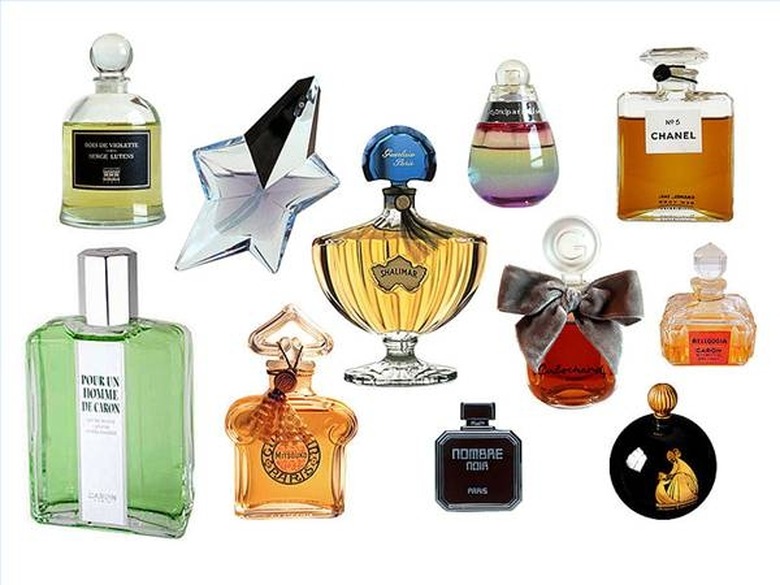How Does The Perfume Atomizer Work?
Air Flow
All atomizers work on the principle of air flow and suction. When horizontal air passes over a vertical tube, it causes the air and liquid inside the vertical tube to be pulled upward. Classic atomizers use a squeeze bulb to store a lot of air that moves quickly over the feeder tube when squeezed. The bulb has two one-way valves located at either end. When the bulb is depressed, the valve leading into the tube that leads toward the bottle is forced open by air pressure while the valve leading to the outside is pulled closed. When the bulb is released, the rubber inside returns it to its original shape, closing the valve leading to the tube, and opening the valve to the outside so that air can fill the bulb.
Reservoir and Feeder Tube
Reservoir and Feeder Tube
The perfume rests in the body of the perfume bottle, or "reservoir." The vertical feeder tube is partially submerged in the reservoir and connected to the bottle's lid, which also houses a tube that connects the squeeze bulb and the nozzle. The vacuum created by the passage of air pulls the liquid up into the feeder tube and pushes it out through the nozzle. When the airflow stops, a small amount of liquid remains in the tube and, because of the cohesion properties of liquids, will act as another mechanism to pull perfume up the tube once the bulb is squeezed again.
Nozzle
Nozzle
The nozzle is the end of the horizontal tube, and is usually made of metal or plastic. When the air and liquid perfume pass through the nozzle, it causes the perfume to break up into small drops and mixes it with the air. The restriction at the end of the nozzle, called a "venturi," speeds up the air and liquid mixture causing the liquid to break up and the air to disperse it widely. Depending upon how hard the squeeze bulb was squeezed, the amount of liquid and its distance dispersed changes.
Atomizing
Atomizing
"Atomizing" does not mean to break down into its component atoms, but rather to break a large body up into small, discrete bodies, typically suspended in another medium. In this case, the liquid perfume is a mixture of oils, alcohols, water and dyes. When the air flow pulls some of the liquid out of the reservoir and mixes it with the air flow, the liquid breaks up into drops suspended in the air, each of which has the same ratio of oils, alcohols, water and dyes.
Cite This Article
MLA
Hinckley, Michael. "How Does The Perfume Atomizer Work?" sciencing.com, https://www.sciencing.com/perfume-atomizer-work-4568884/. 24 April 2017.
APA
Hinckley, Michael. (2017, April 24). How Does The Perfume Atomizer Work?. sciencing.com. Retrieved from https://www.sciencing.com/perfume-atomizer-work-4568884/
Chicago
Hinckley, Michael. How Does The Perfume Atomizer Work? last modified March 24, 2022. https://www.sciencing.com/perfume-atomizer-work-4568884/
